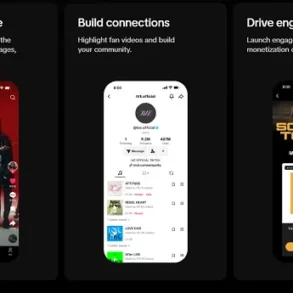AI, SaaS and DAI Enable Outstanding Live Sports Streaming Experiences at Scale
Story Highlights
In today’s digital age, live sports streaming has emerged as a dynamic and lucrative industry. The fusion of technology and sports has not only transformed the way fans consume their favorite games but also created a plethora of business opportunities for media and sports organizations.
Viewers are captivated by watching sports any time on any screen. Global streaming service Amazon Prime Video set a record for the most-streamed NFL game of all time with its first Thursday Night Football broadcast of the 2023 season. The game was watched by an average of 16.6 million viewers on Prime Video across all platforms.
This article will explore the ever-evolving world of live sports streaming, emphasizing the business opportunities within the industry and the advanced technologies that are enabling its further growth. By examining the ongoing challenges, and future trends, the article will provide readers with insights into the future of live sports streaming.
Sports Streaming Business Opportunities
A rising number of fans are engaging with sports streaming services, creating new business opportunities for video service providers, sports clubs and broadcasters. Annual sports OTT subscription revenue in the United States will almost double between 2022 and 2027, reaching approximately $22.6 billion, according to Parks Associates.
Until recently, sport leagues typically sold their content rights to media companies, and that was their main revenue source. Now sport leagues are diversifying their revenues. Many sports leagues and organizations are launching their own direct-to-consumer (DTC) streaming services. Furthermore, sports leagues are selling content rights to media streaming companies that are creating free ad-supported streaming television (FAST) channels, offering viewers rich and engaging content beyond live events. With these DTC services and FAST channels, viewers can go behind-the-scenes and follow their favorite sports clubs and players, watch unique commentary and highlights, and more. By creating new value with fresh content, sports leagues are driving additional revenue.
Targeted advertising is another lucrative business opportunity for sports leagues and service providers. With targeted advertising, sports teams can deliver ads that resonate with viewers’ preferences, making them more likely to engage with those brands. Targeted ads command a higher cost per mille (CPM), the standard measurement for advertising costs, improving profitability.
Personalized sports highlights represent another golden opportunity for video service providers and sports teams. An increasing number of spectators, particularly among the younger demographic, prefer to watch sports highlights vs. entire sports games. Data from YouGov’s Sports Whitepaper 2023 reveals that approximately 34% of global sports enthusiasts aged 18 to 24 favor watching clips or highlights of live games rather than the complete matches. Service providers and sports teams can satiate the demand for short-form content by generating personalized sports highlights, live transcripts, and other features.
Another business possibility involves using real-time graphics and data during live sports events. Sports teams and video service providers can provide near-real-time statistics, scores and other relevant information to viewers, giving them extra insights during the game to boost engagement. These graphics and data can be personalized by viewers, further enhancing user interaction.
Key Challenges Impacting Sports Streaming Services
In the realm of live sports streaming, video service providers are grappling with a range of critical challenges. Chief among these is the issue of scalability, particularly when it comes to accommodating large numbers of viewers. Recent news has highlighted instances where the sports streaming industry has struggled to effectively deliver live events to a vast audience. Service providers must be able to seamlessly manage sudden surges in viewer traffic in real time or risk quality of experience (QoE) being impacted.
Another significant challenge when delivering live sports streams is latency. The time lapse between real-time actions in a live video and the corresponding delay on a subscriber’s screen can spoil the viewing experience, diminishing QoE and customer satisfaction. When video is delayed, viewers might hear about a game-winning goal on social media before seeing it happen on their own screen. Ultimately, this could lead to unwanted churn and the potential of losing subscribers.
Additionally, video service providers face growing competition. With so many different sports streaming services to choose from, it’s important to offer an outstanding QoE, with advanced features such as personalized advertising and game highlights. These are becoming increasingly essential to the viewer experience and not merely a “nice to have” feature anymore, forming the backbone of a superior sports streaming service today, where fan engagement is critical.
Technology Advancements Driving State-of-the-Art Sports Streaming
Several technology innovations are fueling state-of-the-art live sports streaming experiences, including cloud, software-as-a-service (SaaS), dynamic ad insertion (DAI) and artificial intelligence (AI).
The cloud is a robust solution for live sports streaming. Opting for a streaming platform that incorporates geo-redundancy, multi-cloud, and multi-CDN support allows video service providers to guarantee availability, minimize latency, and offer a seamless streaming experience without interruptions.
Embracing a SaaS business model liberates video service providers from the burdens of managing infrastructure. This shift enables them to focus on enhancing agility and operational efficiencies, ultimately streamlining their workflows. A SaaS approach complements the temporary nature of sports events, which can last anywhere from a couple of hours to several days or weeks. Based on a pay-as-you-go business model, SaaS allows video service providers to only pay for what they use, creating immediate opex savings that can be diverted to other more creative activities or put toward acquiring additional content.
Another technology that is elevating live sports streaming experiences is DAI. Recent DAI advancements allow service providers to seamlessly insert personalized ads into live sports streaming content. By examining user data on preferences, demographics, and behavior, sports leagues and service providers can seamlessly integrate pertinent advertisements into their streams in real time to increase monetization and generate a new source of revenue.
In addition, AI is transforming live sports streaming, increasing monetization, improving operational efficiencies, and elevating the overall QoE for viewers while simultaneously cutting costs. AI is growing and will become pervasive across the entire video streaming chain. Service providers, and sports teams and associations, will be able leverage the use of AI technology in media processing, content creation, personalization, targeted ad insertion, and the automated scheduling of FAST channels.
Today, AI technology enables service providers to achieve up to a 50% reduction in storage and CDN requirements. AI also simplifies the delivery of targeted ads at scale, supporting innovative applications such as automated ad break insertion and virtual product placement. In the future, AI will be used increasingly for live sports streaming personalization. One example of how AI tech can be applied to sports streaming is automated clip extraction. In this case, AI algorithms analyze live sports content in real time. By harnessing AI capabilities, service providers and sports teams can swiftly and automatically generate highlights, such as goals, cards, saves, misses, and more. This not only streamlines the content creation process but also enriches engagement by delivering relevant and captivating clips. Viewers who missed the game’s start can navigate the timeline, selecting specific events of interest and enjoying concise 10-second video highlights. Automated clip extraction empowers viewers to catch up on summaries and highlights while multitasking on their mobile devices or game consoles.
Improving Sports Streaming Profitability With Cloud, SaaS, DAI and AI Innovations
The live sports streaming landscape is complex, marked by intense market competition, latency and scaling issues. To take advantage of growth opportunities — including FAST, targeted advertising and content personalization — sports clubs and service providers need to adopt a cloud streaming platform with advanced AI, DAI and SaaS capabilities. Solutions such as Harmonic’s VOS360 Media SaaS and VOS Ad SaaS, are enabling outstanding live sports streaming experiences at scale.
This post was originally published on this site be sure to check out more of their content








